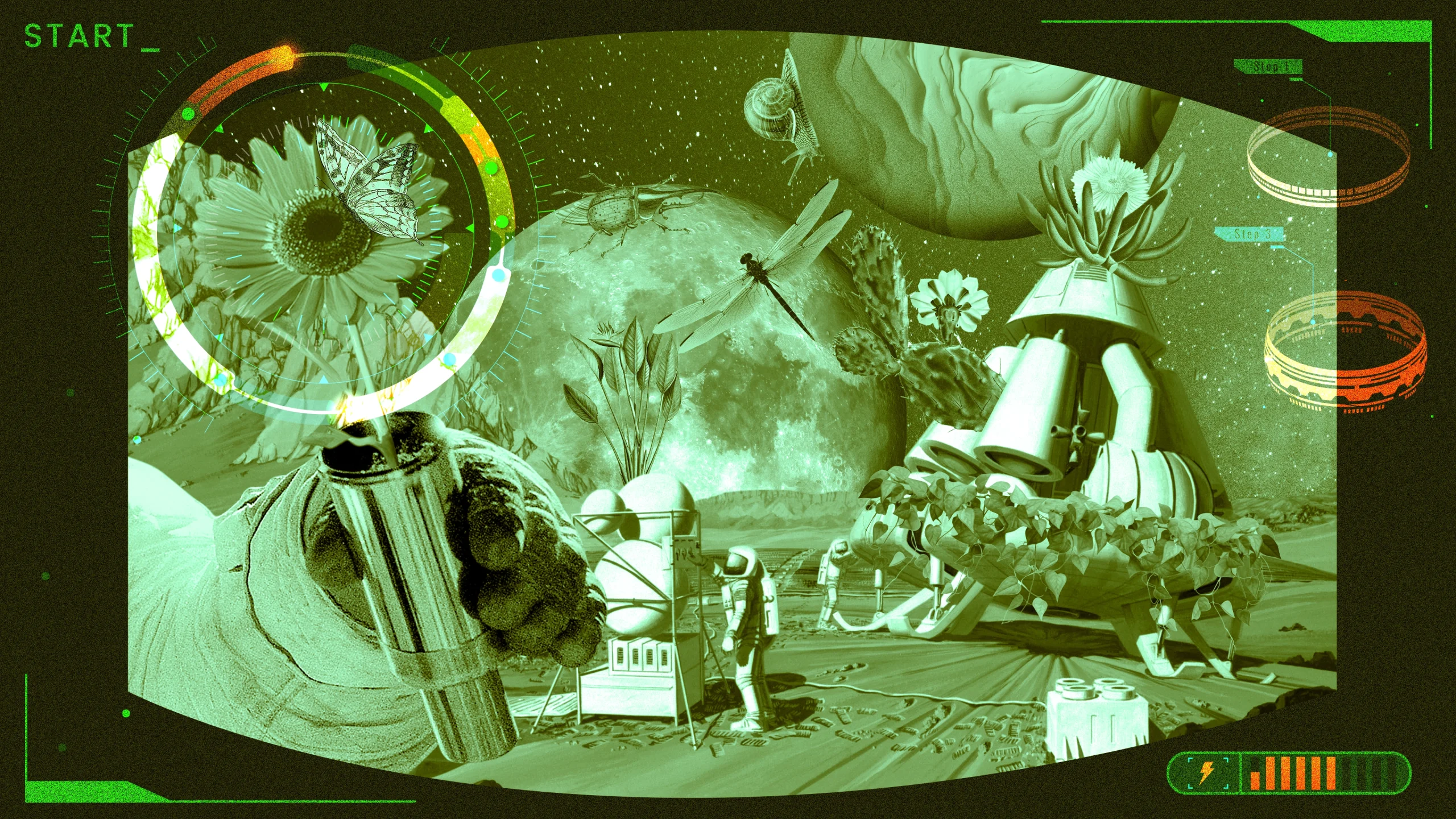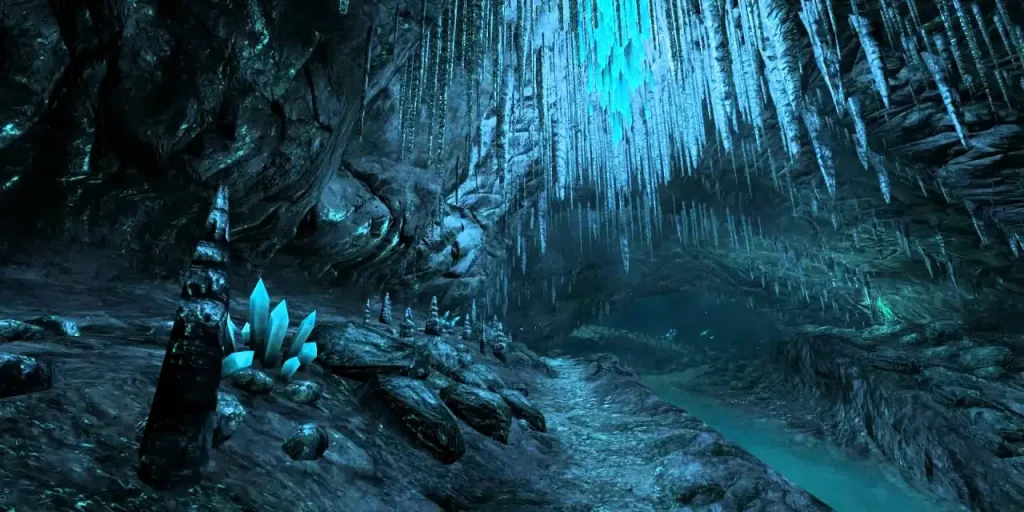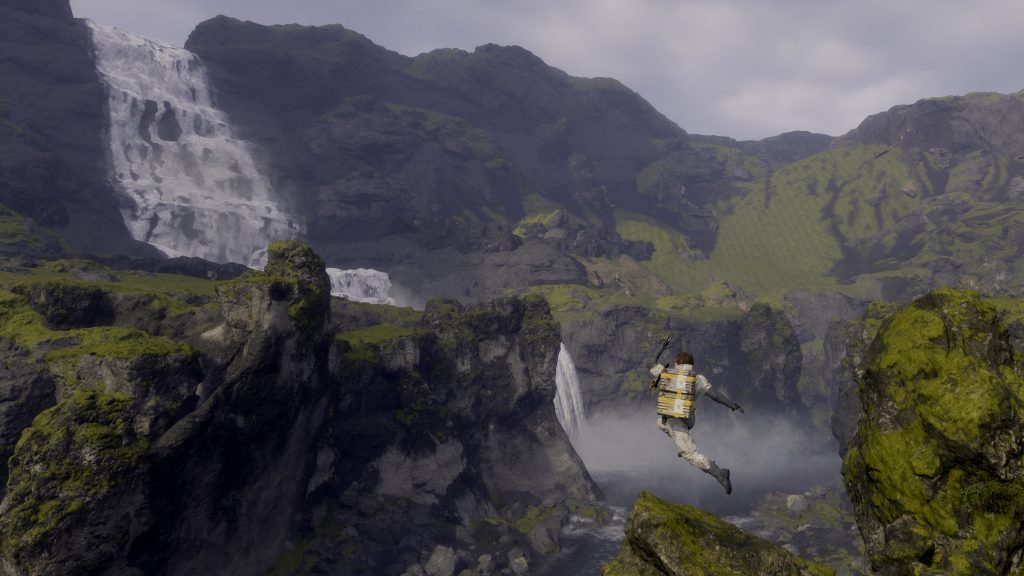
What happens when a video game does not expect you to win, but to take care? In walking simulators and in Hideo Kojima’s Death Stranding, gaming steps away from the logic of frenetic action to embrace an aesthetic of slowness and connection. Ludopoiesis, Murray Bookchin and social ecology form the theoretical foundation of these practices, which transform games into new ecosystems to inhabit, care for and imagine.
In 2024, the global gaming industry generated 182.7 billion dollars and is expected to surpass 188 billion in 2025, with more than 3 billion people playing worldwide. In such a vast landscape, it is no longer enough to ask how much people play: the real question is why and what they play1.
If certain forms of play could make us slow down, listen and take care – not only of an avatar but of the relationships sustaining it – could they change the way we inhabit the world? This is not a utopian slogan: it is what a specific set of video games has already begun to practise, often at the margins of the mainstream and long before the wider public took notice.
Understanding walking simulators and their importance
The term “walking simulator” (or “walking sim”) did not emerge as a noble label: since the early 2000s it has been used derisively in forums and reviews to describe games deemed “unplayable” because they were too slow and extremely contemplative, little more than walking simulations. Yet, from that provocation a recognisable genre has emerged, with its own shared expectations: traversing spaces to read environmental clues, piecing together stories without the centripetal pull of challenge. According to several studies, this category is not defined by precise design rules, but critics, developers and players have spoken and continue to speak about it. In this sense, the virtual “walk” has become a generalised experience of quiet, poetic ambiguity, everydayness and self-reflexivity2.
The video games that launched the genre are well known: Dear Esther (The Chinese Room, 2012), which marked a break from traditional aesthetics, or Proteus (Key/Compton, 2013), with its world to be listened to rather than “conquered”. In both cases, the story does not unfold through missions or levels but is spread across space3. Sociologist Henry Jenkins summed up this shift in perspective as early as the 2000s:
«Game designers don’t simply tell stories, they design worlds and sculpt spaces», that make many stories possible4.
This shift was long controversial, because walking sims reignited an old debate: is a game defined more by its mechanics, by “what you do” in terms of rules and actions, or by its narrative dimension, “what you experience” that turns play into a story? A passionate niche gradually built from the ground up a new grammar and canon of “playing”, where a player’s skill does not necessarily coincide with dexterity or score. One only has to look at Reddit, where early discussions on Dear Esther and Proteus defended slowness as a conscious choice, not as a limitation5.

Ludopoiesis: games that bring relationships into being
Ludopoiesis is the practice of play that “brings relationships into being”, where not only are contents produced (objects, missions, loot…), but clear connections emerge between environment and bodies, between us and others. When we play, we are not alone, nor are we merely testing our abilities: we surrender to a system that does have rules and structure but is at the same time mutable and relational6. Much like dancing: steps can be learned, but it is only in the encounter with one another that dance truly comes to life. The term was coined in 2014 from the Latin ludo (“game”) and the Greek poiein (“to create, produce, generate”), thus meaning “creation through play”7. Here, “creation” refers not only to objects, but to the establishment of relationships.
There are three titles that help us understand how all this takes shape in the language of walking simulators.
Dear Esther8, the symbolic point of departure, is set on a desolate Hebridean island, inviting players to explore cliffs, tunnels and ruins while a narrator whispers fragments of text. There are no puzzles to solve or objectives to reach: what happens is a slow immersion in a landscape that becomes narration. The absence of competitive systems and traditional rewards turns the player into an interpreter, opening up an experience of “poetic ambiguity” and a sense of incompleteness.
Proteus, (Ed Key & David Kanaga, 2013), released a few years later, radicalises this approach. The island is now procedural, not manually designed by developers but generated anew each time by the software within certain rules. Vibrant pixels, sounds and seasons differ in every session and shift with the simple passage of the player. No resources are extracted, nothing is built. The landscape is a sensitive organism reacting to the player’s presence, and walking becomes an act of listening and co-existence.
Finally, Walden, a game (USC Game Innovation Lab, 2017)9 makes explicit the ethical-ecological dimension inherent in the genre. Inspired by the writings of American philosopher and writer Henry David Thoreau, it invites players to try out a simple, contemplative lifestyle on the shores of Walden Pond. Survival is not measured by resources accumulated, but by care for the cabin, the garden and relationships: the design rewards not accumulation, but maintenance and quality of experience.
These experiences clearly show how ludopoiesis reshapes two main axes: time and the player’s position. The first becomes slow and full of meaningful pauses. The second shifts as the player ceases to be a dominator and becomes a co-inhabitant of the virtual world.
From domination to relation: video games through Murray Bookchin
The thought of social ecology intertwines surprisingly well with game design. It was developed by sociologist Murray Bookchin10, who in the 1970s defined nature not as something separate from us, but as a fabric of historical and political relations. His thesis was clear: the idea of dominating nature stems from domination among humans11. In other words, if we learn to build non-oppressive relationships with one another, we may also build a different relationship with the planet.
Translated into the world of gaming, this point becomes crucial: if a game system rewards rapid resource extraction or optimising others at all costs – whether they be Non-Player Characters (NPCs), environments or even players – then it teaches a form of domination that reproduces exploitative logics. Conversely, when design values care, indirect cooperation and the maintenance of shared infrastructures, it nurtures an ecological sensibility. From this perspective, walking simulators and the practices of ludopoiesis become genuine political laboratories12. The slowness that characterises the genre is not romanticism, but a necessary condition for perceiving interdependencies – human and non-human – and for accepting that sometimes “playing well” means not accelerating, not dominating, but holding together what lives.

Fewer bullets, more bridges for Hideo Kojima
There is one author in the world of gaming who has turned slowness, connection and reflection into a creative manifesto: Hideo Kojima, the mind behind titles that have reshaped the very idea of what it means to play. In his Death Stranding (Kojima Productions, 2019), the protagonist Sam Porter Bridges crosses a post-apocalyptic America after a cataclysm, tasked with rebuilding connections between fragmented communities. Players build bridges, shelters and signs for others, in an asynchronous cooperative system that rewards care and solidarity, not violence – a vision Kojima describes as “of strands”, rather than “of sticks”13.
But this inclination towards cooperation did not begin with Death Stranding. In Metal Gear, Kojima overturned the “shoot and kill” paradigm, transforming it into a stealth game based on avoidance. The goal is not to wipe everyone out, but to avoid confrontation and move silently, remaining invisible. What counts here is not brute force, but patience, strategy and subtraction.
Kojima drew inspiration from the film The Great Escape (1963)14 , where the protagonists do not fight, but attempt to flee a prison camp with cunning.
Kojima has repeatedly criticised the repetitive nature of modern video games and their reliance on spectacular violence, training himself in the field, learning «so many ways to kill people15» so that he would never repeat them again.
- Game World Observer. (2025, 26 giugno). Newzoo: In 2024, the global video game market generated $182.7 billion, which is below projections. Game World Observer. https://gameworldobserver.com/2025/06/26/newzoo-in-2024-the-global-video-game-market-generated-182-7-billion-which-is-below-projections ↩︎
- Montembeault, H., & Deslongchamps-Gagnon, M. (2019). The Walking Simulator’s Generic Experiences. Academia. https://www.academia.edu/69688469/The_Walking_Simulator_s_Generic_Experiences ↩︎
- Scholars call this phenomenon “environmental storytelling”. Using this technique, which involves not only video games but also art and cinema, developers communicate plot and information through visual and environmental context rather than just dialogue and text. ↩︎
- Jenkins, H. (2004). Game Design as Narrative Architecture. Massachusetts Institute of Technology ↩︎
- In the thread “History of the Walking Sim” (2018), users link indie experiments to practices of aimless exploration. (2020, June 23). The history of walking simulators – Part 1. Reddit.
https://www.reddit.com/r/truegaming/comments/hc663q/the_history_of_walking_simulators_part_1/ ↩︎ - Gadamer, H.-G. (1989). Truth and Method (2nd rev. ed., trad. J. Weinsheimer & D. G. Marshall). New York: Crossroad. https://web.education.wisc.edu/halverson/wp-content/uploads/sites/33/2012/12/gadamer.pdf ↩︎
- Fps, & Fps. (2020, September 18). Pseudo Game Jam – First person scholar. First Person Scholar – Weekly critical essays, commentaries, and book reviews on games. https://www.firstpersonscholar.com/pseudo-game-jam ↩︎
- The official website of The Chinese Room Ltd, where you can learn more about Dear Esther: https://www.thechineseroom.co.uk/games/dear-esther ↩︎
- The official website of USC Game Innovation Lab to learn more about Walden, a game: https://www.gameinnovationlab.com/walden ↩︎
- Murray Bookchin (1921–2006) was an American philosopher and activist, founder of social ecology. Critic of industrial capitalism and social hierarchies. ↩︎
- «The very idea of dominating nature stems from man’s domination over man.». Bookchin, M. (1982). THE EMERGENCE AND DISSOLUTION OF HIERARCHY. Cheshire Books. https://files.libcom.org/files/Murray_Bookchin_The_Ecology_of_Freedom_1982.pdf (Original work published 1981) ↩︎
- Montembeault, H., & Deslongchamps-Gagnon, M. (2019). The Walking Simulator’s Generic Experiences. Academia. https://www.academia.edu/69688469/The_Walking_Simulator_s_Generic_Experiences ↩︎
- Kojima describes “strands” as psychological “threads” that evolve into bonds and ties; he adds that likes reward actions that are useful to others, not violence, making it clear that what you do for yourself also helps others. ↩︎
- In Metal Gear Solid V: The Phantom Pain in particular, his stance becomes an explicit intention not to glorify violence: «I wasn’t trying to portray violence. I wanted players to reflect on what it is». ↩︎
- Kojima’s «so many ways to kill people» refers to his criticism of many military game developers who do not even know how to dismantle or handle a weapon, adding that this is «kind of sad». ↩︎





